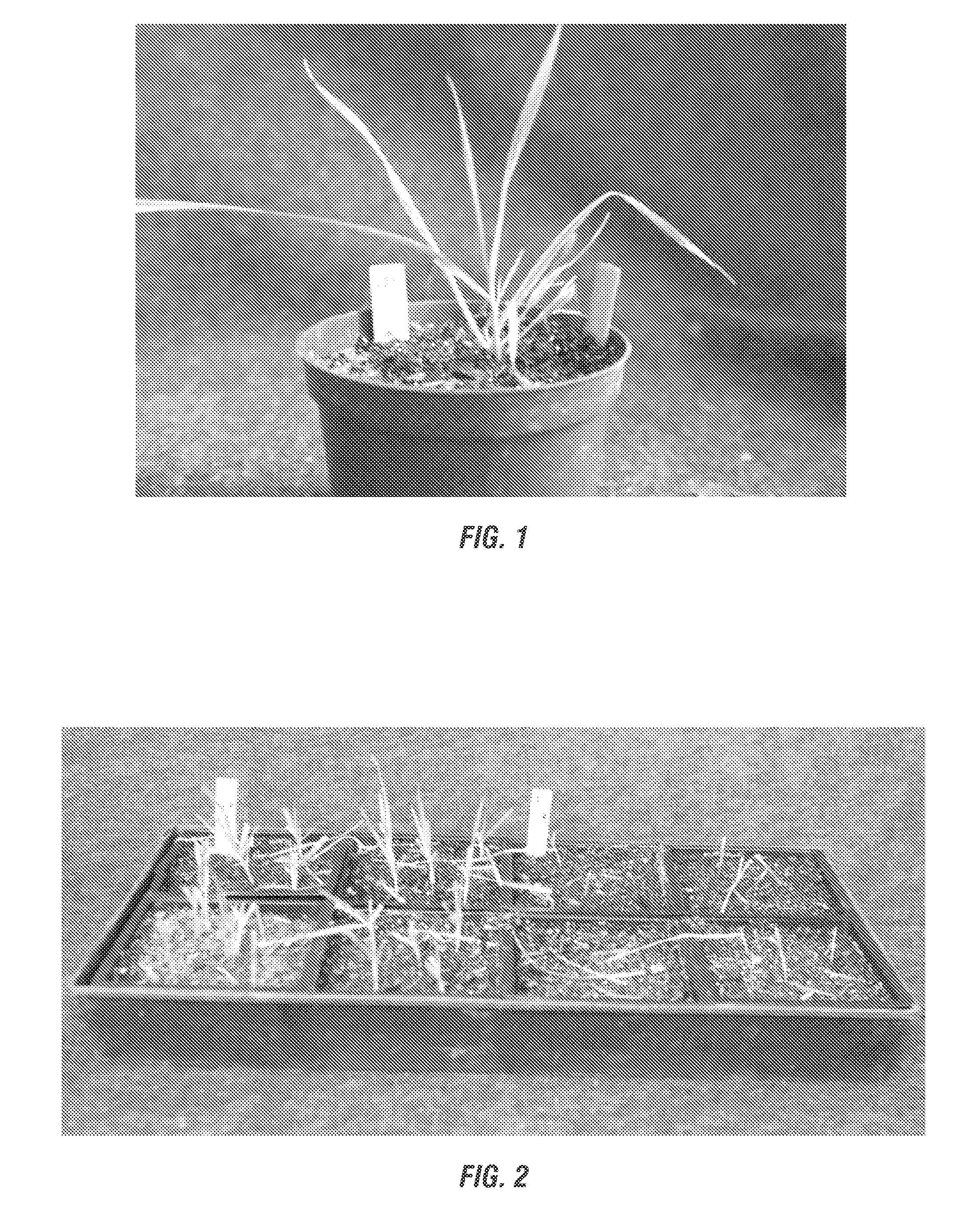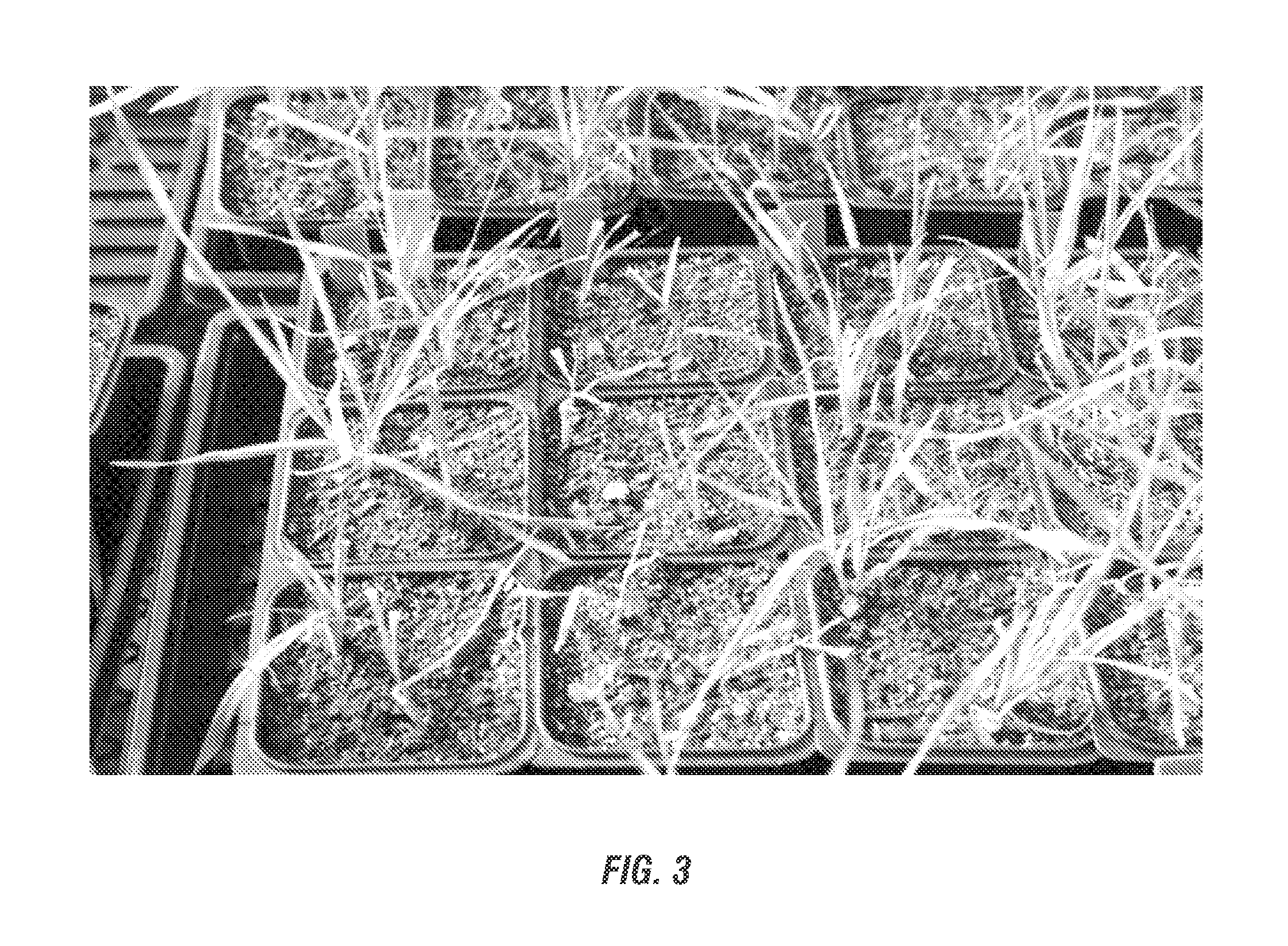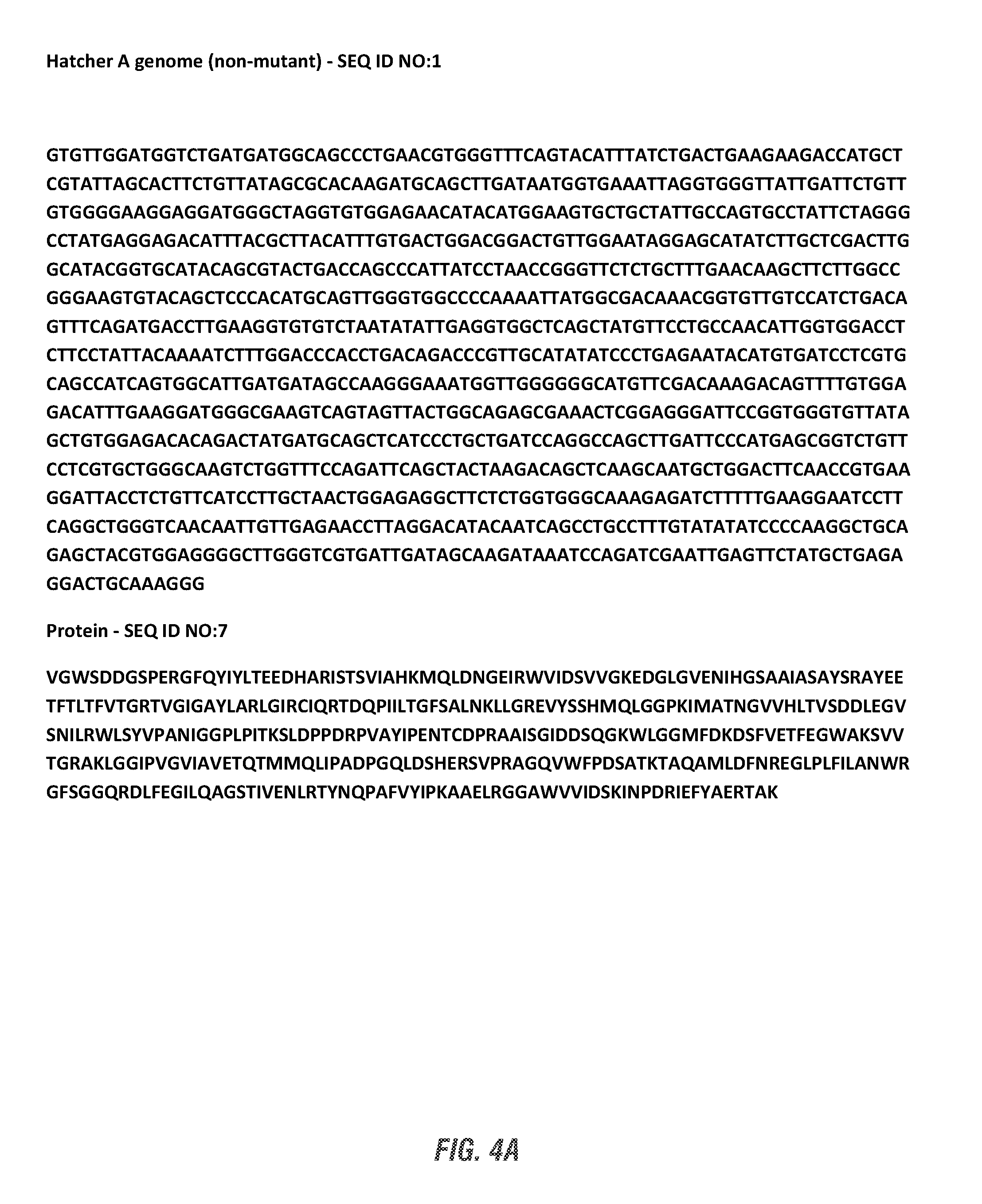Acetyl co-enzyme a carboxylase herbicide resistant plants
- Summary
- Abstract
- Description
- Claims
- Application Information
AI Technical Summary
Benefits of technology
Problems solved by technology
Method used
Image
Examples
example 1
An Acetyl Co-Enzyme A Carboxylase Inhibitor Tolerant Wheat (Triticum aestivum L.) for Use in a Herbicide Tolerant Cropping System
[0172]A winter wheat (Triticum aestivum L.) with tolerance to the Acetyl Co-Enzyme A Carboxylase (ACC) inhibitor class of herbicides was developed via the following method:
[0173]Winter wheat seed, variety Hatcher, was subjected to a potent chemical mutagen (non-transgenic method), ethane methylsulfonate (EMS), at a rate of 0.75% for 2.5 hours. This seed is hereby denoted M1, each subsequent generation of seed will be denoted with a sequentially increasing numeral following the M. This resulted in a mutation frequency in the wheat genome of about 1 mutation per 96 kb (calculated in the M2 generation). This wheat was planted in February and harvested July. The resulting M2 seed was planted in the field in September at a total population of 2.5 million plants.
[0174]In May the following year, the field was divided into two sections; one section was treated wit...
example 2
[0178]An Acetyl Co-Enzyme A Carboxylase Inhibitor Tolerant Wheat (Triticum aestivum L.) for Use in a Herbicide Tolerant Cropping System
[0179]A winter wheat (Triticum aestivum L.) with tolerance to the Acetyl Co-Enzyme A Carboxylase (ACC) inhibitor class of herbicides was characterized via the following methods:
[0180]Plants exhibiting an increased tolerance to quizalofop herbicide were screened with multiple methods for identifying and characterizing the cause of increase. Plants were screened for visual injury, whole-plant quizalofop tolerance differences, cross-resistance to other herbicides, and evaluated genotypically and enzymatically.
Visual Evaluation.
[0181]18 quizalofop-tolerant accessions were treated with 21.05 g ai ha−1 quizalofop, a discriminating dose based on previous studies. Plants were evaluated 28 days after treatment (DAT) for visible injury to quizalofop on a scale of 0 to 100%, with 0 being no injury and 100 being complete desiccation. Nearly all accessions evalua...
PUM
| Property | Measurement | Unit |
|---|---|---|
| Fraction | aaaaa | aaaaa |
| Fraction | aaaaa | aaaaa |
| Electrical resistance | aaaaa | aaaaa |
Abstract
Description
Claims
Application Information
 Login to View More
Login to View More - R&D
- Intellectual Property
- Life Sciences
- Materials
- Tech Scout
- Unparalleled Data Quality
- Higher Quality Content
- 60% Fewer Hallucinations
Browse by: Latest US Patents, China's latest patents, Technical Efficacy Thesaurus, Application Domain, Technology Topic, Popular Technical Reports.
© 2025 PatSnap. All rights reserved.Legal|Privacy policy|Modern Slavery Act Transparency Statement|Sitemap|About US| Contact US: help@patsnap.com



